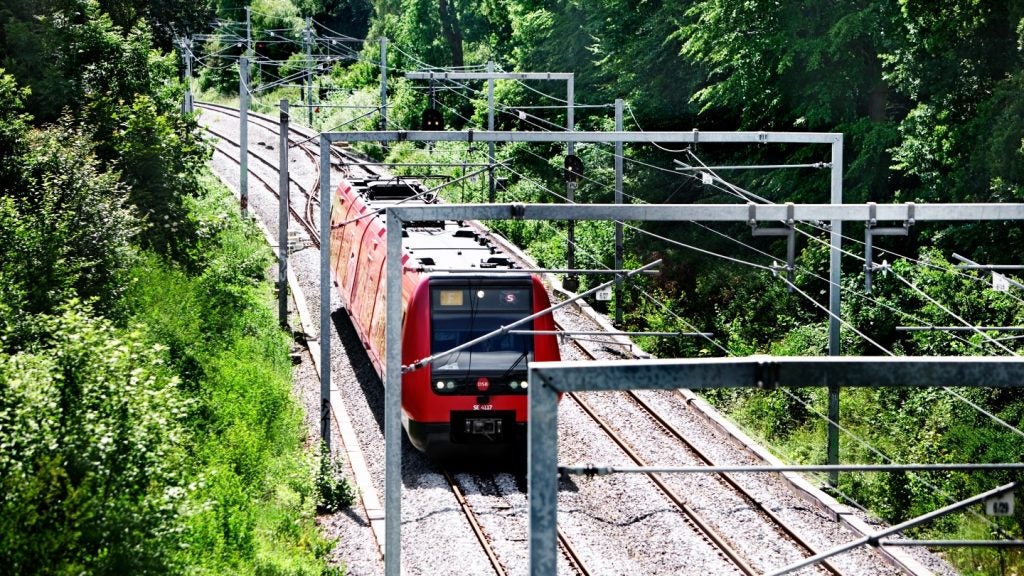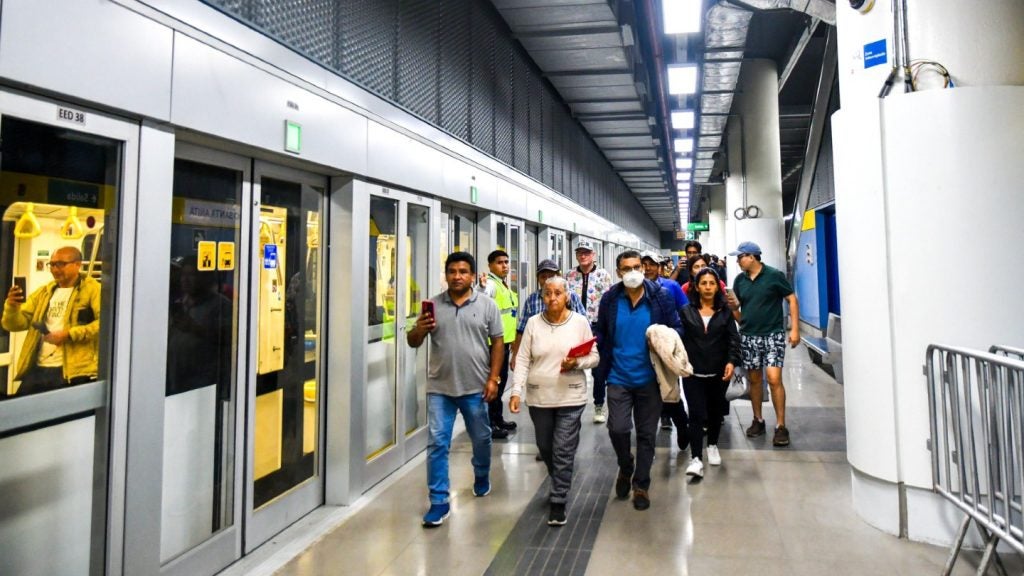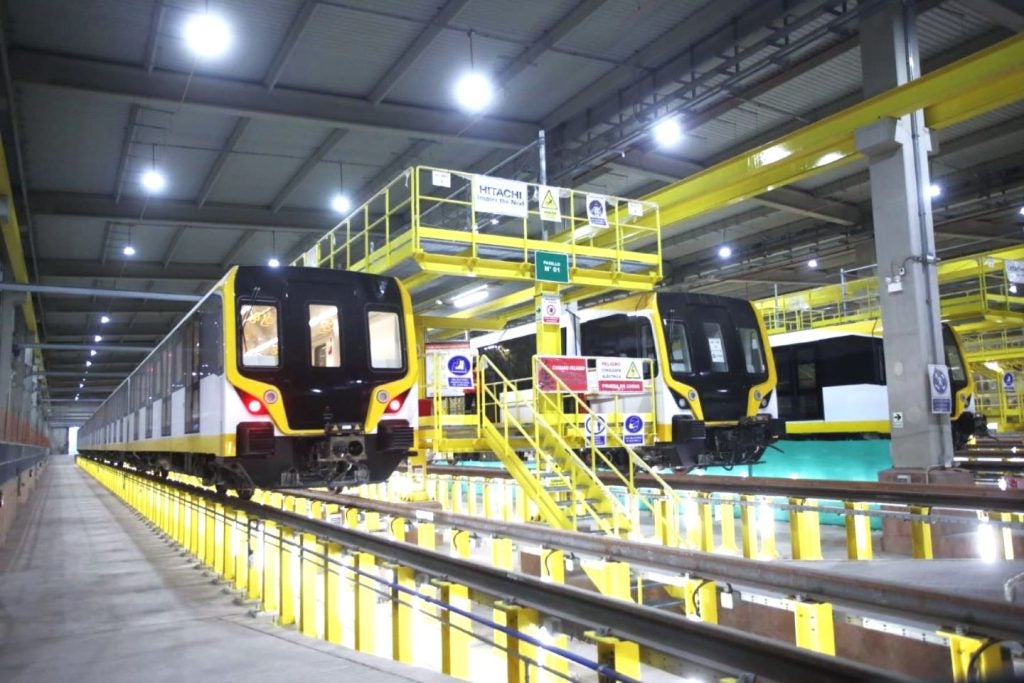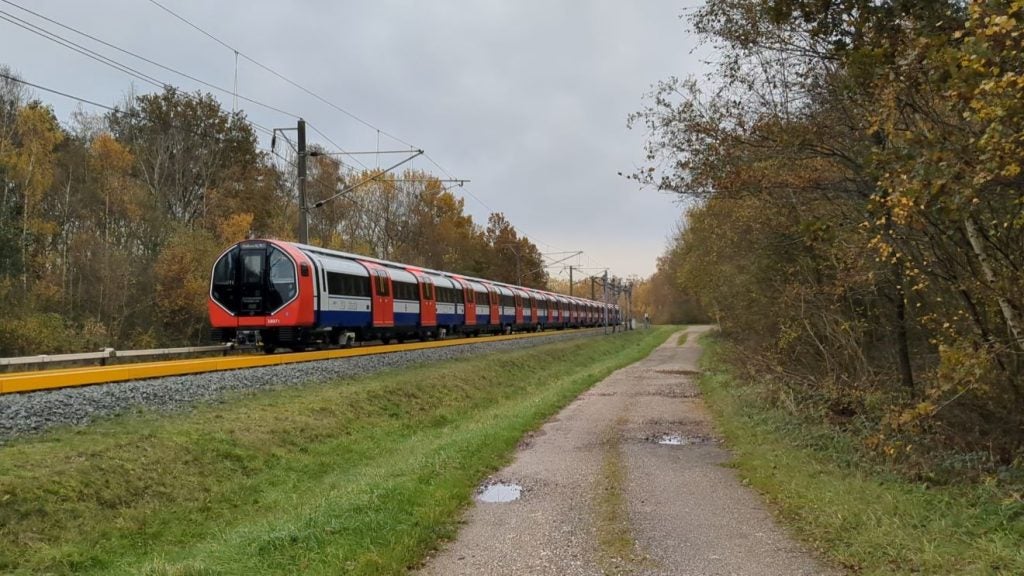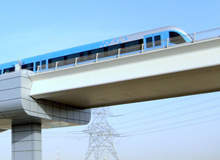
All eyes will turn to headline-grabbing Emirate of Dubai in September 2009 when the city partially opens its new driverless metro network. The first rail project of its kind in the UAE, Dubai Metro has been four years in the making and is set to become the world’s longest fully automated rail system.
Two lines of the metro system, the Red and Green Lines, are under construction totalling some 70km route length, of which 13km will be in tunnels, beneath central Dubai and the Dubai Creek. At 52.1km in length, the Red Line will have 29 stations, four of which will be underground. It will run from Rashidiya to Jebel Ali, on a north-south axis through the main thoroughfares of Dubai. The 17.6km-long Green Line will have 14 stations of which six will be underground, and will have two interchange stations with the Red Line at Burjuman and Union Square.
Plans are already in place to extend the network by four new lines: Purple Line (49km), Blue Line (50km) and Palm Deira Yellow and Black Lines (26.5km), with extensions to the majority of lines planned.
Behind the scenes
But a great deal goes on behind the scenes when it comes to rail construction. While tenders were carried out for tracks and rail-cars, tunnelling engineers were overcoming their own issues with Dubai’s loose to medium dense, high permeability marine sand.
See Also:
The AED12.45bn ($4.2bn) design and build contract was awarded to the Dubai Rail Link (DURL) consortium in May 2005. As part of this, Atkins Tunnels, one of Europe’s largest tunnelling groups, was appointed as detailed designer by the design and construct civil contractor JTM JV. The rail systems partner was Mitsubishi Corporation and the engineer to the contract was Systra / Parsons joint venture.
How well do you really know your competitors?
Access the most comprehensive Company Profiles on the market, powered by GlobalData. Save hours of research. Gain competitive edge.

Thank you!
Your download email will arrive shortly
Not ready to buy yet? Download a free sample
We are confident about the unique quality of our Company Profiles. However, we want you to make the most beneficial decision for your business, so we offer a free sample that you can download by submitting the below form
By GlobalDataThe design and construct contract document contained a Reference Design (DCP1) produced by Systra, which has been further developed by Atkins. The company also had a continuing involvement during the construction phase in a support role.
Laying the groundwork
Investigations were developed from pretender site investigation (SI) data by way of a geological desk study. Further SI for the detailed design comprised boreholes, in-situ tests within boreholes, lab testing, pumping trials and geophysical and bathymetrical surveys.
These tests showed that a high water table existed throughout the scheme, with the groundwater being hyper-saline. Both the ground and the groundwater were described as extremely aggressive.
The buildings and structures above ground were described as typically low-rise or less than eight storeys, and were mostly RC-framed structures on rafts or shallow footings. However, there were a number of piled structures, including some structures under construction, such as the deep basement Al Ghurair Centre, piled to below tunnel horizon, which had to be taken into account.
The Dnata Building, which belongs to one of the largest travel organisations in the Middle East, was described as being at greatest risk during the tunnel construction.
However, the project adopted a risk-based approach to structure damage risk mitigation. A risk assessment was conducted for all structures, which were analysed using finite element methods. Additional measures were planned for structures considered to be at ‘slight or greater’ risk.
The project environmental impact assessment also identified two petrol stations at risk from settlement damage. The alignment passed directly under the storage tanks of one petrol station and passed close to another. Monitoring of ground water and of excavated fill was undertaken to check for tank leakage as the tunnel boring machine (TBM) passed, ensuring compliance with NFPA requirements.
Tunnelling trauma
To ensure the project was managed correctly – given there was no previous experience of TBM tunnelling in Dubai – it was important to conduct a trial initial drive. Japanese project experience between 1997 and 2006 of 322 STM projects and 932 EPBM projects was investigated by JTM.
As a risk mitigation measure, a second screw conveyor was added to the back-up to ensure maintenance of face pressures in the cohesion-less soils. Results from the initial and heavily instrumented Red Line trial drive were presented.
It was decided that EPBMs would be used. Four of the drives radiated out from Union Square, while two further drives on the Green Line ‘loop’ were driven from Palm Deira and Al Ras.
Project management
However, it was not just about the work underground. Extensive data management systems were used, and the three TBM drive sites were connected to a common data system through the internet. Real time monitoring, relayed to the surface site office included drive data, muck sensor control PC (linked with belt weigher), face and grout pressures, gas detection, camera images and total station data. The TBM data collection system also had to be updated every minute.
Throughout the process, DURL set a target of no more than one reportable accident per million man-hours worked. As of October 2008, approximately 113m man-hours had been worked on the project, for which there had been 133 reportable accidents. The accident frequency rate was stated to be 1.18.
Dubai Metro’s Red and Green lines are due to open on 9 September 2009.
The article first appeared in our sister publication Tunnel & Tunnelling International.



